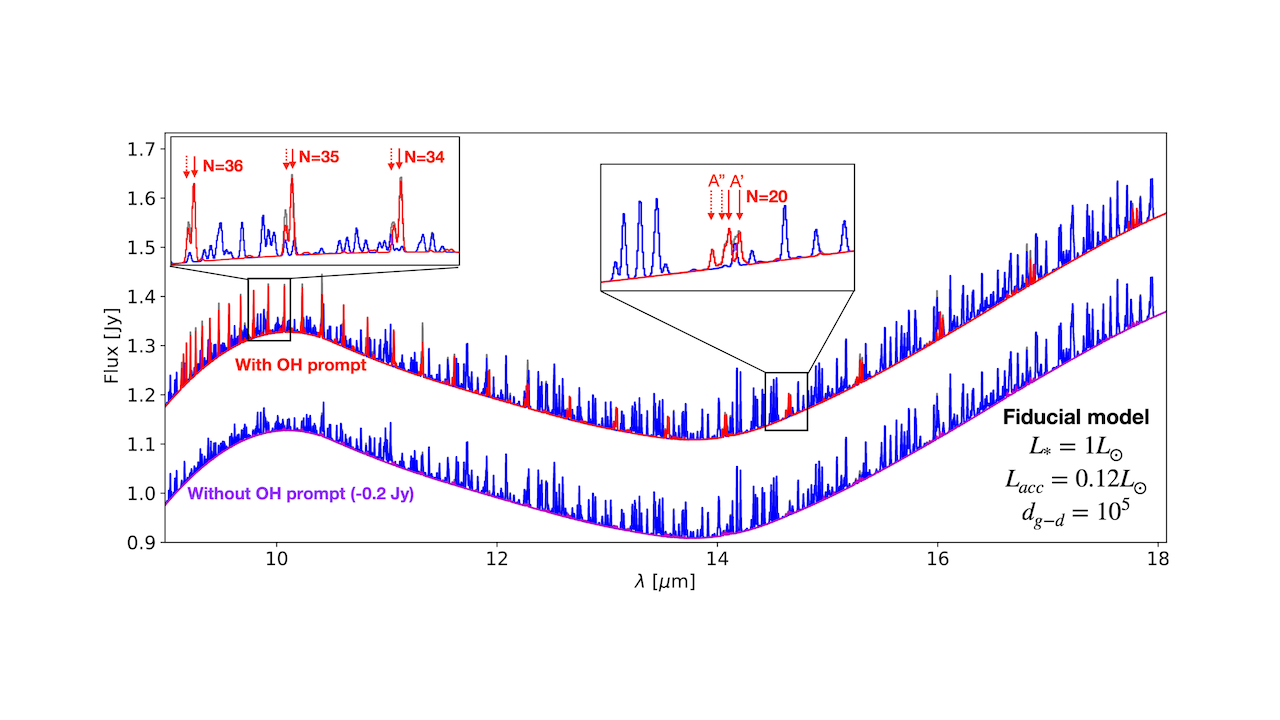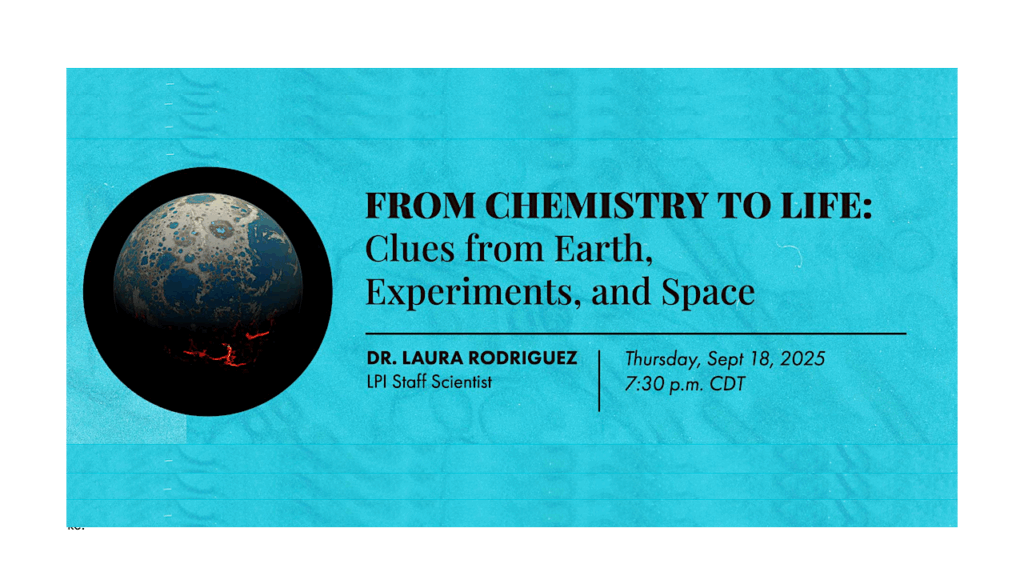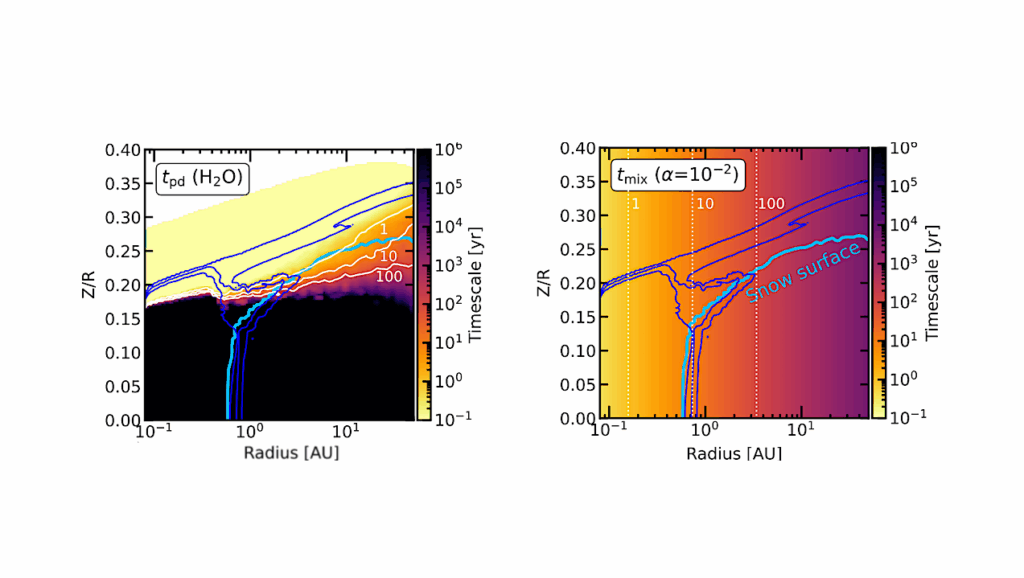OH Mid-infrared Emission as a Diagnostic of H2O UV Photodissociation. III. Application to Planet-forming Disks

JWST gives a unique access to the physical and chemical structure of inner disks (<10~au), where the majority of the planets are forming. However, the interpretation of mid-infrared (mid-IR) spectra requires detailed thermo-chemical models able to provide synthetic spectra readily comparable to spectroscopic observations. Our goal is to explore the potential of mid-IR emission of OH to probe H2O photodissociation. We include in the DALI disk model prompt emission of OH following photodissociation of H2O in its B̃ electronic state (λ<144~nm).
This model allows to compute in a self-consistent manner the thermo-chemical structure of the disk and the resulting mid-IR line intensities of OH and H2O. The OH line intensities in the 9−13 μm range are proportional to the total amount of water photodissociated. As such, these lines are a tracer of the amount of water exposed to the FUV field, which depends on the temperature, density, and strength of the FUV field reaching the upper molecular layers.
In particular, the OH line fluxes primarily scale with the FUV field emitted by the star in contrast with H2O lines in the 10-20 μm range which scale with the bolometric luminosity. OH is therefore a key diagnostic to probe the effect of Lyα and constrain the dust FUV opacity in the upper molecular layers. A strong asymmetry between the A’ and A” components of each rotational quadruplet is also predicted. OH mid-IR emission is a powerful tool to probe H2O photodissociation and infer the physical conditions in disk atmospheres.
As such, the inclusion of OH mid-IR lines in the analysis of JWST-MIRI spectra will be key for robustly inferring the composition of planet-forming disks. The interpretation of less excited OH lines requires additional quantum calculations of the formation pumping of OH levels by O+H2 and the collisional rate coefficients.
Benoît Tabone, Ewine F. van Dishoeck, John H. Black
Comments: Accepted for publication in Astronomy & Astrophysics
Subjects: Earth and Planetary Astrophysics (astro-ph.EP); Solar and Stellar Astrophysics (astro-ph.SR)
Cite as: arXiv:2406.14560 [astro-ph.EP] (or arXiv:2406.14560v1 [astro-ph.EP] for this version)
https://doi.org/10.48550/arXiv.2406.14560
Focus to learn more
Submission history
From: Benoît Tabone
[v1] Thu, 20 Jun 2024 17:59:28 UTC (7,447 KB)
https://arxiv.org/abs/2406.14560
Astrobiology, Astrochemistry,








